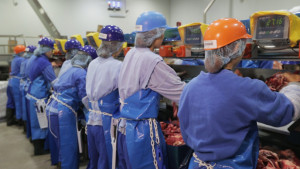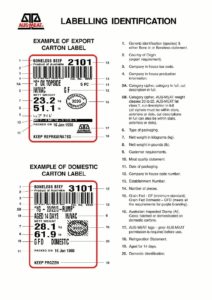Why is meat packaged?
Meat is packaged in individual wrappers, vacuum packs, cartons, bins, barrels, crates and netting to:
- protect it from outside contaminants like air, dust and any other foreign matter
- protect it from damage during transportation
- bulk package it for convenience when handling, chilling, freezing, transporting, labelling and stamping
- satisfy customer specifications including packing, labelling and identification of product.
What steps do you take before you start packaging?
So that packaging runs smoothly, you should first check that:
- your work area is clean, tidy and free of obstacles
- the packaging equipment is set up and operational, e.g. tapes fed into machines
- the product and type of package conforms to any specifications set out by workplace and customer requirements, e.g. cube rolls are in cardboard cartons with plastic liners with a weight target of 40kgs
- any labels, bar codes or date marks are set correctly
- any weighing equipment is working satisfactorily and is properly calibrated
- any stacking or pallet procedures for transport of product are in place
- liners are pulled up and folded over to completely protect the product – this is very important with manufacturing product that will be flaked
- the outside of the package is clean e.g. no blood stains or unsightly dirt and grease stains
- any packing containers such as crates or tubs cannot damage the product
- edible and inedible containers are clearly marked.
As shown below, packing different meat cuts at the same time requires skill and concentration.



How do you package according to specification?
There will be work instructions and specifications to describe how the product should be packed.
You will need to know:
- the weight of product to go in each carton
- the carton, branding and labelling to be used
- the liner to be used
- how the product is to be laid out in the carton.

An example of carton labels with details
© AUS-MEAT Limited 2001
You will also need to identify any out-of-specification product and follow the work instruction for taking corrective actions. This may involve:
- downgrading the product
- having the product reworked
- condemning the product.
